Flying our Cirrus SR22, N412DJ, is always an adventure. Jane, Rick, and I decided to explore Telluride for skiing with friends. Traveling to Telluride is time-consuming by car (8 hours from Denver), however the capability to fly into the airport, just a few miles from the slopes, is awesome. The Telluride airport, KTEX, is at 9070′ MSL and is the highest commercial airport in North America. Only Leadville, CO KLVK airport is higher at 9934′ MSL (the subject of another story).
Having flown N412DJ into Telluride a number of times, each with spectacular views, it was an easy decision to take the Cirrus. Pre-flight planning is always important, and takes on more significance when flying in the winter to a mountain destination. Our first decision was that we would definitely cancel or delay with any adverse changes in the weather. We started looking at the long range forecast the week prior, and updated every day. In anticipation of potential snow while at TEX, we reserved a hangar to keep the bird ice-free. The FBO, Fly Telluride, is extremely helpful and provided great information for our trip.
There are various routes to Telluride, and we have flown directly at higher altitudes and this trip we took a more southern route with a stop in Glendale GEU Arizona to have lunch with a friend. Taking the latter path this time enabled us to fly at 11, 500 MSL and below the entire trip and experience some wonderful scenery. No matter how many times I fly over this area, I’m always amazed by the sites.
The flight from MYF to GEU is easy either IFR, or VFR. We opted for IFR for the practice, flying along the typical route (MZB V66 GDN Direct). The Gelendale airport is an easy stop, outside of Phoenix proper, and with fast services and a good restaurant and pilot shop at the terminal.
From GEU to TEX, you have the option of flying IFR on the airways at an MEA of 9-11,000 ft, with a short segment at 12,000 (FERER V567 INW V495 RSK V68 ETL TEX) or VFR nearly direct with slight deviations for higher terrain. We opted for VFR, with Flight Following, since the visibility was essentially unrestricted. The views are spectacular across this area, with great views of Shiprock, and countless formations.
As you enter Colorado, the peaks rise even higher and less than 1.5 hours from Arizona (with headwinds) you can view Lone Cone, one of the ‘Cones’ mountains which indicates that the ETL (Cones) VOR is minutes away. Lone Cone bears an uncanny resemblance to Mt. Shasta in shape.
All IFR approaches to TEX (RNAV, VOR, LOC) use ETL as the initial fix, with various descent profiles. Even though we did not anticipate using the approaches, we still briefed them since they provide great information on MSAs, missed approach procedures and other great information. I also always keep a sectional handy and review the terrain whenever flying in the mountains, even if IFR. I always want to know my options.
Approaching Telluride you have a great perspective of the airport on the mesa with a steep valley to the south, and another mesa. The location offers some challenges with terrain clearance as well as up and down drafts so it is useful to make sure you have a safety margin.
As we approached the airport on final for Runway 9, we had a fascinating view with the ski area in the background. Airport personnel had done a great job of clearing the snow from the recent snowfall, and with a length of 7110 feet it would be easy for DJ! We kept just a few extra knots for potential downdrafts on the approach end. The runway has a pronounced dip in the middle so the sight picture is a bit unusual. Since we were landing at 9,070 ft. our touchdown ground speed was 18% faster than at sea level (2% * 9). It is important to take this into account when flying at high altitude airports since your distances increase and of course you consume more brake energy stopping the aircraft. We flew Lean of Peak (LOP) and burned only 60 gallons on the four hour flight from MYF, with headwinds.
Our friends picked us up at the airport, however there are several easy options to get to town. I started visiting the town in the early 80s when I served as Captain of Detectives for the Telluride Marshall’s Office. I was a detective for Boulder and the town needed a volunteer to help write arrest warrants! The core town area is the same, however the outlying areas have greatly expanded!
Telluride Mountain has 4,000 acres to ski, and a busy day is 4,500 skiers so you can imagine that crowds do not exist, and lift lines are very short most of the time. The town of Mountain Village is actually at the base of Lift 4 and one of the gondolas. It is a great place to stay, since you can walk a short distance to the lift. The mid-mountain restaurants provide a great rest top with good food and live music!
Departing Telluride
Since we are at 9000 feet, we slightly modified our starting procedure. Starting with slightly less than full rich mixture, Rick started DJ and then leaned for smooth operation on the ground. Using the placarded fuel flows of approximately 20 GPH at full throttle, we took off and started a climb over the valley to the town and then the ski area for some photos. A Stemme motorglider had just departed TEX for the ski area, so we kept in contact with them and soared on updrafts over the area.
After a few circuits over the ski area, enjoying the view, we headed back to Arizona and then San Diego. The views on the return were just as spectacular.
The Rockies are a great flying destination. The weather can change quickly, so it is prudent to keep updated on the latest information and have alternate courses of action in mind. After many years of flying in the Rockies during the summer, I always try to do the flying in the morning due to the quick build up of adverse weather after noon. If you have any questions regarding mountain flying, feel free to ask.

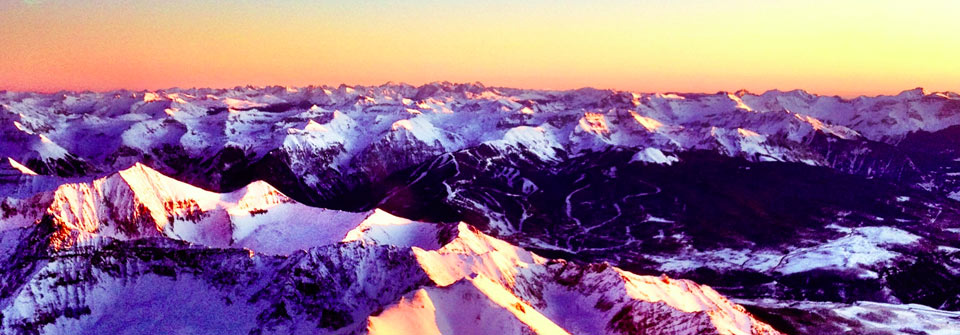
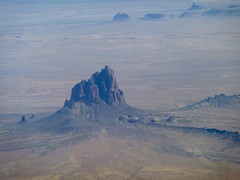
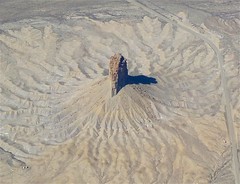
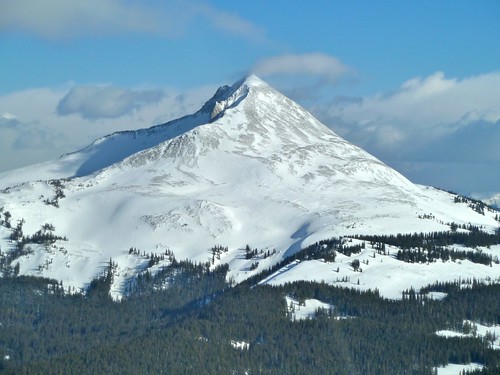
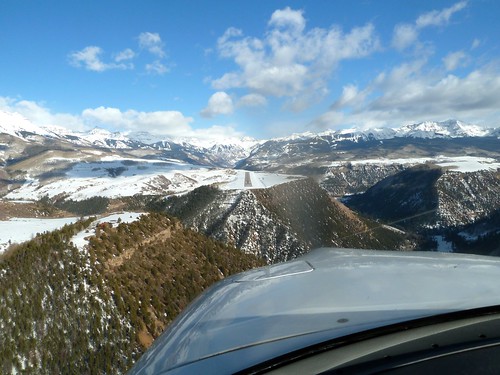
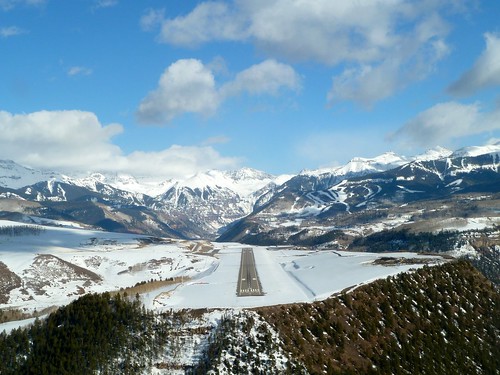
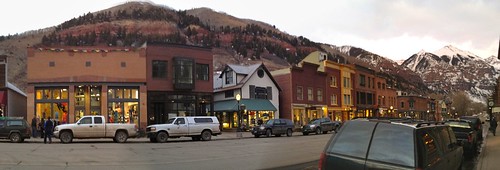
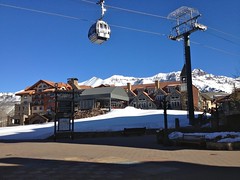

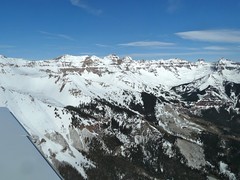
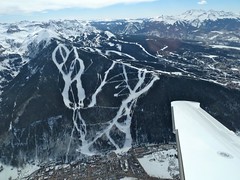
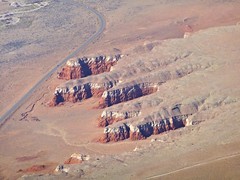
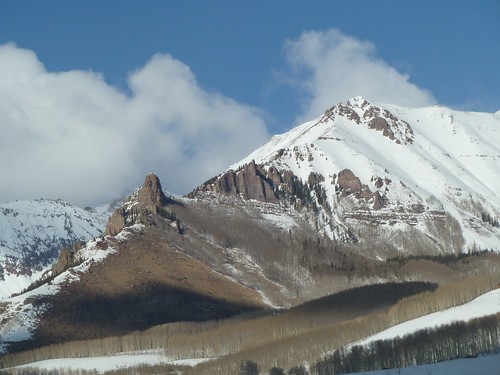
The views at the Mountain Lodge in Telluride ARE some of the best in Telluride. I’d even go so far as to say they are some of the best in any resort. I love that place! Good drink sclpiaes too